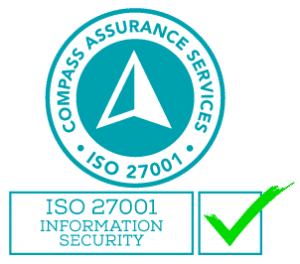In an era defined by technological advancements and ubiquitous digital connectivity, the importance of Information Technology (IT) security is growing exponentially across various industries. As an architectural design manager, one of the critical elements you must grasp is IT security.
Understanding the Importance of IT Security
IT security in the architectural design industry isn’t just about thwarting cyber threats. It is about safeguarding a firm’s heart – the creativity and precision encapsulated in design files, the intellectual property that sets it apart from competitors, and the confidential client data entrusted to it.
A security breach can lead to massive financial losses – from the immediate costs of mitigating the breach to lost revenue during downtime and potential regulatory fines. However, the impact isn’t solely financial. A data breach can also erode your firm’s reputation. In the architectural industry, reputation is a precious commodity, painstakingly built over years of delivering quality designs and maintaining client confidentiality. A single breach can cause irreparable damage, shaking client trust and affecting future business prospects. Consequently, IT security is not just beneficial; it’s integral to the long-term survival of your firm.
Unmasking Cyber Threats
The digital era has brought numerous benefits, from automating manual tasks to facilitating seamless collaboration. However, it also has a darker side – the rise in cyber threats. As technology advances, so too does the nature of cyber threats. Understanding the landscape of these threats is the first step to mitigating them.
One common threat is ransomware, a type of malware that locks you out of your network or encrypts your data, making it inaccessible unless a ransom is paid. Phishing attacks aim to trick unsuspecting employees into providing sensitive information, such as login credentials. Data breaches involve unauthorised access to sensitive data, which can then be sold or used maliciously. By understanding these threats, you can implement appropriate countermeasures and educate your employees about what to watch out for.
The Role of Password Policies
In a world increasingly governed by digital access, passwords are your first line of defence. They are the keys that unlock your digital assets. As such, creating a robust password policy is an integral part of your IT security strategy.
This policy should enforce regular password changes to ensure that even if a password falls into the wrong hands, its usefulness is time limited. It should encourage the use of complex password structures – a mix of upper- and lower-case letters, numbers, and symbols – that are harder for hackers to guess or break. Finally, it should ensure passwords are encrypted, rendering them unreadable in case your password database is compromised.
How Multi-factor Authentication Enhances Security
Multi-factor authentication (MFA) provides an additional layer of security. It requires users to verify their identity using at least two separate forms of authentication before gaining access to the system. This could involve something the user knows (like a password), something the user has (like a physical token or access to a specific device), or something the user is (like a fingerprint or other biometric factor).
This system dramatically increases your security posture. Even if an attacker manages to steal a password, they are unlikely to have the second factor required to gain access. It may seem like a small step, but it can make a big difference in your overall IT security.
Regular Security Audits – A Preventive Measure
Just like regular health check-ups can catch potential diseases before they become serious, regular security audits can identify weak points in your IT security before they are exploited by cybercriminals.
Audits should assess all aspects of your IT security, from password policies and firewall configurations to employee access rights and backup procedures. Regular audits can help you keep pace with the rapidly evolving threat landscape, allowing you to refine and update your security measures as new threats and vulnerabilities emerge.
Safeguarding Client Information with Data Encryption
Trust is a key aspect of client relationships, especially in the architectural industry where firms handle sensitive client information regularly. Data encryption helps maintain this trust by converting data into an unreadable format that can only be deciphered with a decryption key.
By encrypting data both at rest and in transit, you ensure it is protected at all times. Even if a hacker intercepts the data, they won’t be able to read or use it without the decryption key, ensuring your client’s information remains secure.
Secure File Sharing and Network Segmentation – Keys to Limiting Damage
Secure file sharing and network segmentation are both effective ways to limit the potential damage caused by a security breach. Secure file sharing platforms use encryption to protect files as they are transferred, preventing unauthorised access. Network segmentation divides your network into separate segments, each isolated from the others. If one segment is compromised, the breach can be contained, protecting the rest of your network.
Why Partnering with a Managed Service Provider (MSP) Makes Sense
Given the growing sophistication and frequency of cyber threats, staying ahead can be a daunting task. Partnering with a Managed Service Provider (MSP) can offer a solution. MSPs specialise in managing and monitoring IT systems, and their expertise can be invaluable in detecting and responding to threats, and ensuring your IT security remains up to date.
It’s Time to Take Action!
As an architectural design manager, IT security falls within your purview. Proactively enhancing your firm’s IT security is not just a strategic move, it’s a necessity. In the digital era, threats are ever evolving, and standing still is not an option.
Securing your firm’s digital assets can seem overwhelming, but help is available. At Steadfast Solutions, we specialise in creating customised IT security solutions to fit your firm’s unique needs. Don’t wait until it’s too late – contact Steadfast Solutions today, and let’s secure your firm’s digital future together.




